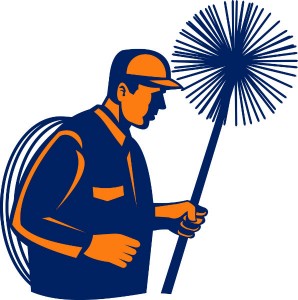Chimney Liners: Stainless Steel Vs Clay Tiles
Our chimneys are complex structures with a number of different components hidden behind the bricks and mortar. One of the most important – and least recognized – parts of the chimney is the chimney liner. While chimney liners are designed to protect our homes against heat transfer, damage, changing fuel sources, or simple wear and tear may require the chimney to be relined.
What is a chimney liner?
The Chimney Safety Institute of America defines a chimney liner as “a clay, ceramic, or metal conduit installed inside of a chimney, intended to contain the combustion products, direct them to the outside atmosphere, and protect the chimney walls from heat and corrosion.”
The chimney liner is used as a barrier between the heat and gas produced by the fire and the rest of your home. If the chimney liner is damaged or missing your house is at significant risk for a chimney fire; National Bureau of Standards found that without a chimney liner insulation, framing, and walls around a chimney can ignite in as little as three and a half hours.
Clay Tile VS Stainless Steel Liner
Clay tile and stainless steel are the two most common kinds of chimney liners. There are advantages and disadvantages to both, understanding their differences can help homeowners determine the best type of chimney liner for their fireplace system.
- Clay tiles. Clay tiles are the most common kind of chimney liner. The majority of new chimneys are built using clay tile liners because of their affordability and ease of installation. Clay tile liners are recommended for fireplaces that burn wood or pellets. However, they are not recommended for use with gas fireplaces; the acidic condensation produced by gas can cause premature deterioration to clay tiles.While built to withstand regular wear and tear, clay tiles are extremely susceptible to damage from moisture, chimney leaks, or chimney fires. Because of the way they are installed, individual clay tiles cannot be replaced without removing parts of the surrounding masonry.
- Stainless steel. Stainless steel liners are not often used in new chimney construction. Instead, they are used when relining chimneys as a way to repair damage or when changing fuel sources. Stainless steel liners are known for their safety and durability. Likewise, they can be used with fireplaces that burn all fuel sources including wood, gas, pellets, and oil.Although they are more expensive than clay tile liners, stainless steel liners offer increased safety and durability. Because stainless steel liners are manufactured, most include a limited or lifetime warranty after installation. This can help prevent or significantly reduce any future maintenance costs associated with the liner.
Call Us Today
At Jack Pixley Sweeps, we recommend stainless steel liners to all our customers who need to have their chimneys relined. The unmatched safety, affordability, and durability of stainless steel liners can benefit you and your family for years to come. For more information on the benefits of relining your chimney with a stainless steel chimney liner, contact our expert staff today!


